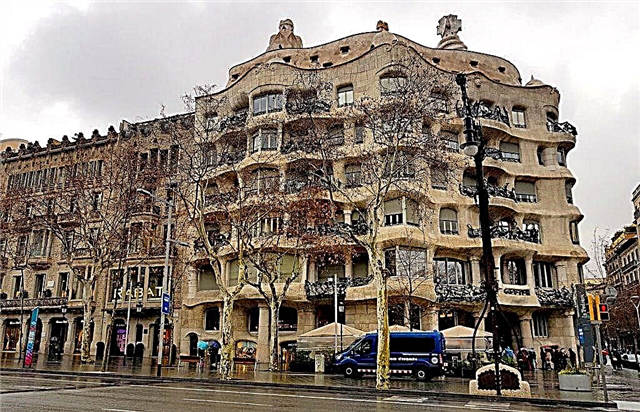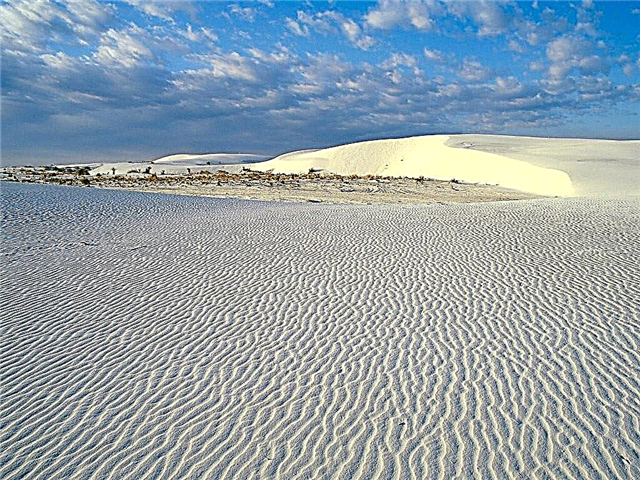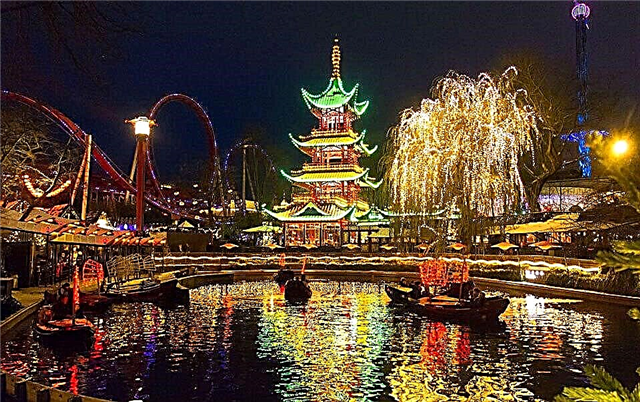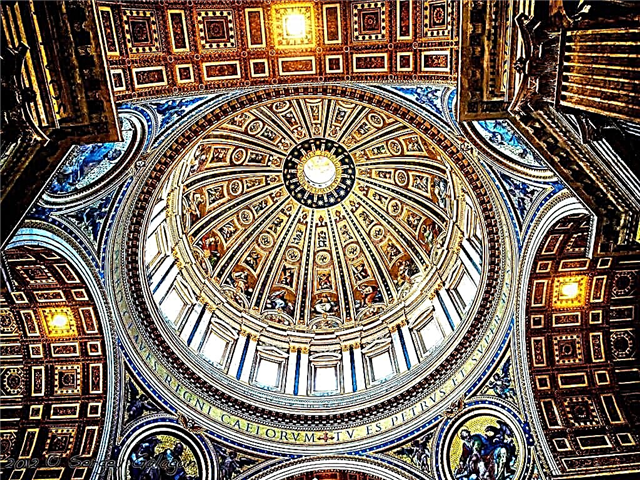The Church of St. Peter in Rome is considered the largest church in the world with sacred significance for Christianity. The luxurious decoration of the cathedral's decoration is a tribute to the Apostle Peter, whose ashes rest in the church. The cathedral consists of numerous chapels decorated with sculptures and religious relics.
Construction history

In the 1st century AD Nero was the emperor of the Roman state. His reign was marked by a high growth of the economy and the well-being of citizens, as well as the manifestation of a cruel disposition. In Rome, new residential areas of the plebeians, luxurious palaces for aristocrats, baths and circuses were erected. There was only an untouched piece of land on a high hill on the other side of the Tiber. The place was used to carry out executions of people convicted according to the laws of ancient Rome.
In 64, Rome was engulfed in a devastating fire. Nero accused Christians of this, whom he subjected to terrible persecution. At this time, the capital of the great empire is visited by a certain wanderer from the Judean province, who bore the name Simon. He was a disciple of Jesus, from whom he received the nickname "stone" (in Greek - petros). They began to call him Peter. The follower of Christ was accused of preaching a new faith, for which the Roman authorities sentenced the apostle to crucifixion upside down. The convict was executed at the top of the hill, where the body was buried. Subsequently, Christians erected a memorial wall at the burial site.
In the 4th century, Emperor Constantine legalizes Christianity. A small basilica was laid over the grave of Peter. In 1500, the Temple of Constantine was demolished due to the dilapidated walls. Pope Julius II undertook the construction of a new basilica. Donato Bramante was appointed as the architect. According to his project, it was supposed to erect a grandiose building topped with a massive dome. The premature death of the architect halted construction. Subsequent architects were unable to finally determine the appearance of the cathedral.
In 1546, the construction of the basilica was led by Michelangelo, who wanted to implement Bramante's idea. The temple should be represented as a Greek equilateral cross. The entire structure of the cathedral from the foot to the top of the dome must rest on a high drum, which is surrounded by slender columns. The coming Baroque era left its mark on the architecture of the temple. A wide space was required to accommodate a large crowd of believers. It was decided to lengthen the nave of the basilica and add several chapels. In 1626, Pope Urban VIII solemnly consecrated St. Peter's Cathedral.
Description and architecture
An elliptical square, bordered by graceful sixteen-meter columns, leads to St. Peter's Basilica. In its central part there is an obelisk with a height of 240 meters. The grand size of the temple is also impressive. Its length is 211 meters and the height of the dome is 136 meters. The cathedral can accommodate 60 thousand people. The central element of the structure of the church is a dome with a cross at the top. This massive piece of architectural art is considered a symbol of the Vatican. The dome with sixteen ribs rests on a massive drum decorated with Corinthian columns. Sixteen windows are located in the hemisphere.
The facade of the cathedral, built in the 17th century by the architect Karl Moderna, is decorated with pilasters and consists of two tiers with an attic. In the lower part there are five bronze gates, the panels of which are decorated with images of Old Testament subjects. Each portal has its own name: the Gates of Good and Evil, Death, Mysteries, Filaret and the Holy Gates. Nine windows are visible above them, three of which have balconies. The attic is bordered by a balustrade and crowned with huge five-meter statues of Christ and the Apostles. On the sides of the façade there are sculptures of Saints Peter and Paul. Peter holds in his hands the keys to the Kingdom in Heaven, given to him by the Lord. The Apostle Paul holds a drawn sword in his hands.
Interior

The halls of the cathedral are striking in their rich decoration and enormous size. The walls and ceilings are decorated with bas-reliefs and sculptures. Twenty-meter arched vaults lead to numerous chapels and precious church relics. The cathedral is the burial place of the Popes, whose tombs are located along the naves. One of the masterpieces, located in St. Peter's Basilica, is Michelangelo's sculptural work - Pieta. The master depicted the Virgin Mary weeping over the body of Christ. The woman is holding Jesus on her knees. The artist emphasized the inextricable unity of mother and son. The sculptor carved the figures from one block of marble. The sculpture is protected by bulletproof glass.

In the niches of the huge pilasters under the dome are statues reminiscent of the torment of Christ. There you can see Saint Longinus holding the spear with which he pierced Jesus' chest. Nearby, St. Veronica shows a handkerchief with the image of the face of Christ. Saint Helena stands nearby with a massive cross. The inner surface of the dome is decorated with images of the apostles with their symbols: Mark with a lion, John with an eagle, Matthew with an angel, Luke with an ox.
On the frieze, a gilded Latin phrase says about Christ's parting words to his disciple Peter. The bronze statue of Saint Peter, seated on a throne, is a highly revered sculpture for the parishioners. The apostle holds a key in his left hand, and his right hand is raised in a gesture of blessing. Peter's foot is slightly pushed forward at the base of the pedestal so that believers passing by can kiss her.
The cathedral houses the magnificent mausoleums of the sculptor Bernini, which are framed by columns and relief ornaments. One of the tombstones is dedicated to Pope Urban VIII, whose sculpture is shown with his right hand raised. The master created the second tomb for Pope Alexander VII. His sculptural image prays surrounded by allegorical statues of young virgins, symbolizing truth, justice, mercy and prudence. The colorful altar of the Transfiguration of Christ makes an indelible impression. It consists of a magnificent panel based on the famous work of Raphael Santi. The painting depicts Jesus ascending upward, surrounded by his disciples.

In the depths of the apse of the temple, there is a giant storage facility built for valuable relics. A complex sculptural composition can be seen here. It is a wooden lectern with an old chair literally hovering over it. According to legend, the apostle Peter sat on it during his sermon. The throne is surrounded by statues of theologians - teachers of the Latin and Greek churches. Above the pulpit is visible the dove of the Holy Spirit, surrounded by angels against the backdrop of clouds and sunbeams.
The relics of Pope Leo I the Great rest in one of the cathedral's chapels. A relief image of white marble rises above the shrine. The panel describes the legendary scene, how Pope Leo, coming out to meet the army of the Huns, with only one cross in his hands, turned the barbarians into a stampede. The chapel of St. Sebastian deserves special attention. Here is a painting framed by marble pilasters. The panel is made according to the sketches of the famous painter Dominichino. The work describes the martyrdom of the Roman legionary Sebastian, who was accused of practicing Christianity.
Confessional (tomb) of St. Peter
The main value of the cathedral is the tomb of the great martyr Peter. In the center of the temple there is an altar with inextinguishable lamps. Below it is the apostle's tomb, to which two semicircular marble staircases lead. They descend to the level of the ancient Constantine Basilica, which previously stood at this place.In 1939, archaeological excavations began here, initiated by Pope Pius XII. During the research, a necropolis was discovered, in which the remains of the body of the Apostle Peter were found. Now they are kept in a tomb called the "Confessional of St. Peter". The altar is decorated with a canopy made by the sculptor Bernini in 1624. It is installed on four twisted bronze columns, which are 29 meters high. At the top of the structure are sculptures of angels.
Where is it and how to get there
St. Peter's Basilica is located on the eponymous square in the Vatican. It can be reached by metro (Ottaviano station). There is a bus and tram stop a few meters from the square.











